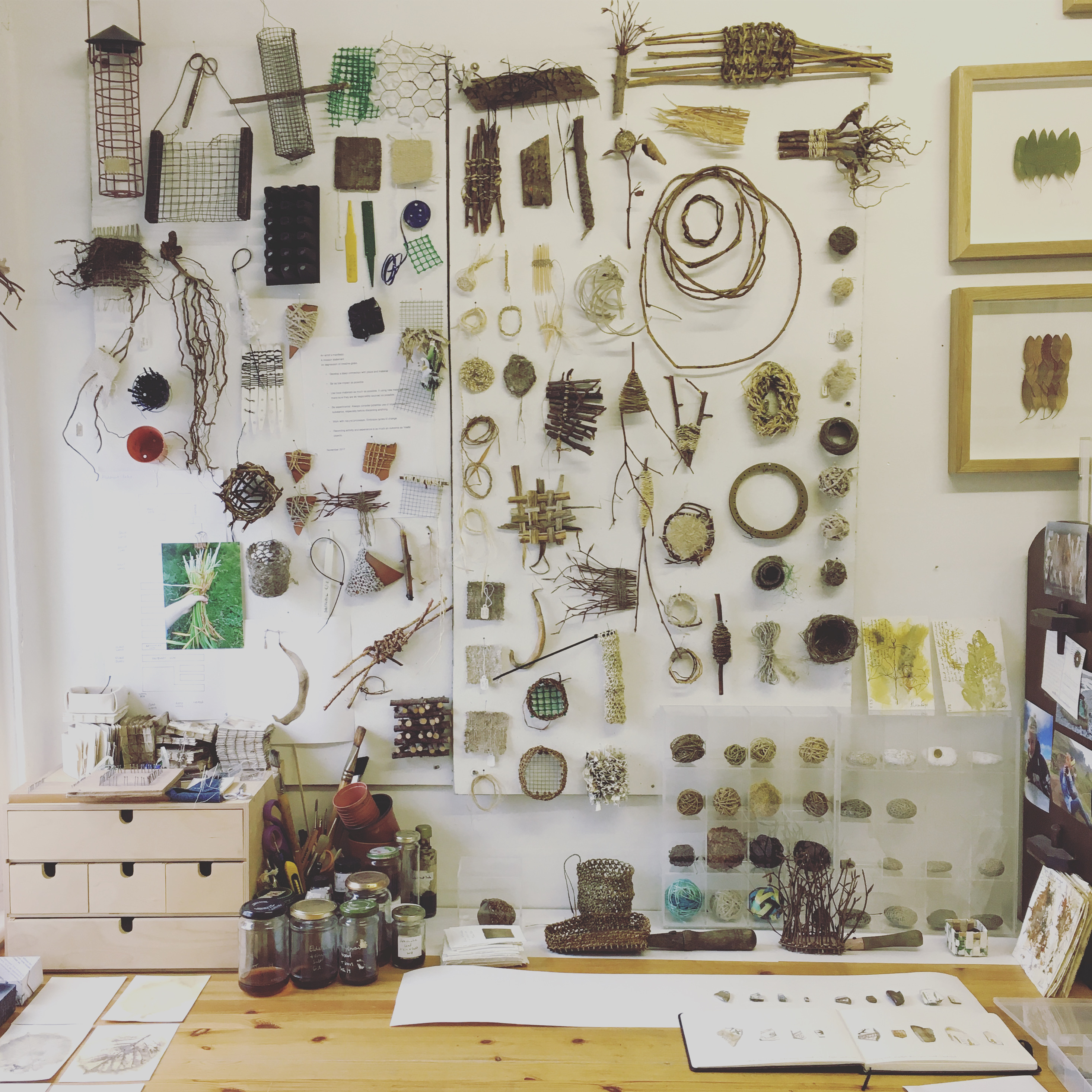
""But peek through the window of the main shed, and your eyes will be drawn to a wonderful organized jumble of plant pots, trays, tools, jars of homemade botanical inks, sketches, scribbles, samples, fragments of ceramics, wire, plastic, and other unearthed objects, as well as an ever-changing assortment of plant fibers in various stages of drying and hand-processing.""
""Now is the time to collect and dry this wild herb's aromatic flowers and seeds for winter cooking," writes Marie. Read how in Mugwort Flowers: Dry the Invasive Herb for Cool Season Cooking. Above: "In cold climates (read: the ground freezes), dahlia tubers need to come out of the garden if they are to survive the winter," writes Michelle. "Dig them up and store them in the basement, garage, or a protected shed-and dahlias will reward you next summer with more enormous puffball blooms.""
Late-autumn gardens provide abundant materials for hands-on projects, including fallow stems suitable for weaving into baskets, herbs for drying, and tubers for storage. Fallow stems can be transformed into woven baskets after harvest and basic processing. Dying herbs, such as mugwort, offer aromatic flowers and seeds that can be collected and dried for winter cooking. In climates where the ground freezes, dahlia tubers must be dug up and stored in basements, garages, or protected sheds to survive winter and produce large blooms the following summer. Garden sheds can serve as workspaces for fiber processing, botanical inks, and material organization.
Read at Remodelista
Unable to calculate read time
Collection
[
|
...
]